Evolutionary Ecology
The department of Evolutionary Ecology gathers complementary skills in behavioural ecology, population dynamics, population biology, community ecology, and methodology (statistics and modelling). The research done in the department aims at studying how animal species evolve in a changing world by understanding the causes of the evolution of traits, adaptations and interactions. For that, we consider different levels of organization from individuals to populations and communities. Because organisms cannot be considered isolated from other biotic factors, we consider pathogens but also competing species within communities.
We study how individuals adapt to their environments that are largely impacted by anthropic pressures, and how life history traits and behaviour evolve in response to these pressures. Although we mainly focus on phenotype, we more and more consider the mechanistic link between the genotype and the phenotype. We develop the theoretical framework of our discipline through a conceptual and modeling approach. In parallel, we test hypotheses that arise from theoretical predictions through experimental, comparative and observational approaches on different biological models (insects, birds, mammals). Experimental approaches are developed in the laboratory (insect model) and in natura (bird, insect and mammal models). Observational and comparative research is mainly concerned with vertebrates. Our approaches are also, and increasingly, interested in the mechanisms of adaptive responses. In addition to the classical approaches of demographic analysis and trait change, methods of ecophysiology, chemical ecology and molecular biology are used.
Our department hosts several long-term studies of wild populations of different species. These long-term studies offer a valuable way to understand how biotic and abiotic factors affect individuals’ life history traits, and the functioning of populations in natura. Five populations of mammalian species are thus monitored for several years (more than 40 years on roe deer, 30 on Alpine marmots, 25 years on cats, 16 years on zebras, and 20 years on impala). Two of our study sites (La Sassière in Vanoise National Park (Alpine marmots) and Hwange National Park) have been certified as “Site d’Etude en Ecologie Globale” (SEEG), and two (ZA “Hwange” and ZA “Antarctic and sub-Antarctic”) were certified as “Zone Atelier” by the CNRS.
The department of Evolutionary ecology is also largely involved in training activities. Lastly, we also have strong socio-economic relationships. Indeed, because we address questions of major societal interest (global warming, public health) we tightly collaborate with socio-economic partners (Office Français de la Biodiversité, Vanoise National Park, Hwange National Park in Zimbabwe, Office National des Forêts, etc.) and participate to general public and media events.
Publications
Display of 1921 to 1950 publications on 2483 in total
Stochasticity and spatial heterogeneity in population dynamics: implications for ecotoxicological risk assessment
SETAC Europe 17th Annual Meeting, Porto, Portugal, PRT, 20-24 May 2007 . : 1
Conference paper
see the publicationUnexpected heterozygosity in an island mouflon population founded by a single pair of individuals.
Proceedings of the Royal Society B: Biological Sciences . 274 : 527-533
Journal article
see the publicationPredicting the emergence of human hantavirus disease using a combination of viral dynamics and rodent demographic patterns
Epidemiology and Infection . 135 : 46--56
Journal article
see the publicationThe effects of cyclic dynamics and mating system on the effective size of an island mouflon population
Molecular Ecology . 16 : 4482-4492
Journal article
see the publicationThe Near Eastern Origin of Cat Domestication
Science . 317 : 519-523
Journal article
see the publicationDetecting population structure using STRUCTURE software: effect of background linkage disequilibrium
Heredity . 99 : 374-380
Journal article
see the publicationFeeding-order in an urban feral domestic cat colony: relationship to dominance rank sex and age
Animal Behaviour . 74 : 1369-1379
Journal article
see the publicationA descriptive spatial analysis of bovine tuberculosis in intensively controlled cattle farms in New Zealand
Veterinary Research . 38 ( 3 ) : 465-479
Journal article
see the publicationMandibles and molars of the wood mouse, Apodemus sylvaticus (L.): integrated latitudinal pattern and mosaic insular evolution
Journal of Biogeography . 34 : 335-355
Journal article
see the publicationLe projet ECOMIC-RMQS ou comment faire de la microbiogéographie à l'échelle de la France
Journées d'animations scientifiques des ORE ACBB . : n.p.
Conference paper
see the publicationArbuscular mycorrhizas and ectomycorrhizas of Uapaca bojeri L. (Euphorbiaceae): sporophore diversity patterns of root colonization and effects on seedling growth and soil microbial catabolic diversity
Mycorrhiza . 17 : 195-208
Journal article
see the publicationSoil functional diversity and P solubilization from rock phosphate after inoculation whith native or allochtonous arbuscular mycorrhizal fungi
Forest Ecology and Management . 241 ( 1-3 ) : 200-208
Journal article
see the publicationEvolution and invasion dynamics of multiple infections with Wolbachia investigated using matrix based models.
Journal of Theoretical Biology . 245 : 197-209
Journal article
see the publicationAn individual-based model for describing the bullhead population dynamics in a river network
The 6th european conference on ecological modelling ECEM 07, Trieste, ITA, 27-30 novembre 2007 . : 1
Conference paper
see the publicationQuantitative Risk Assessment of Listeria monocytogenes in French Cold-Smoked Salmon: I. Quantitative Exposure Assessment
Risk Analysis . 27 : 806-819
Journal article
see the publicationPersistence of Shiga toxin-producing Escherichia coli O26 in cow slurry
Letters in Applied Microbiology . 45 ( 1 ) : 55-61
Journal article
see the publicationAn implicit approach to model plant infestation by insect pests
Journal of Theoretical Biology . 248 ( 1 ) : 164 - 178
Journal article
see the publicationA New Method for Assessing the Effect of Replication on DNA Base Composition Asymmetry
Molecular Biology and Evolution . 24 : 2169-2179
Journal article
see the publicationIndicators of ecological change: new tools for managing populations of large herbivores
Journal of Applied Ecology . 44 ( 3 ) : 634-643
Journal article
see the publicationAssessment of Triatoma dimidiata dispersal in the Yucatan peninsula of Mexico by morphometry and microsatellite markers
The American Journal of Tropical Medicine and Hygiene . 76 ( 5 ) : 930-937
Journal article
see the publicationMale Reproductive Success in a Social Group of Urban Feral Cats (Felis catus L.)
Ethology . 113 : 283-289
Journal article
see the publicationMorphological vs. molecular evolution: ecology and phylogeny both shape the mandible of rodents
Zoologica Scripta . 36 : 525-535
Journal article
see the publicationMorphological diversity of Old World rats and mice (Rodentia Muridae) mandible in relation with phylogeny and adaptation
Journal of Zoological Systematics and Evolutionary Research . 45 : 263-279
Journal article
see the publicationEvolution of an invasive rodent on an archipelago as revealed by molar shape analysis: the house mouse in the Canary Islands
Journal of Biogeography . 34 : 1412-1425
Journal article
see the publicationMandibles and molars of the wood mouse Apodemus sylvaticus (L.): integrated latitudinal pattern and mosaic insular evolution
Journal of Biogeography . 34 : 339-355
Journal article
see the publicationQuantitative conodont-based approaches for correlation of the Late Devonian Kellwasser anoxic events
Palaeogeography, Palaeoclimatology, Palaeoecology . 250 : 114-125
Journal article
see the publicationThe ade4 Package: Implementing the Duality Diagram for Ecologists
Journal of Statistical Software . 22 : 1-20
Journal article
see the publicationThe ade4 Package--II: Two-table and K-table Methods
R News . 7 : 47-52
Journal article
see the publicationConsensus genetic structuring and typological value of markers using multiple co-inertia analysis
Genetics Selection Evolution . 39 ( 5 ) : 545-567
Journal article
see the publicationAre extra-pair young better than within-pair young? A comparison of survival and dominance in alpine marmot
Journal of Animal Ecology . 76 : 771-781
Journal article
see the publication
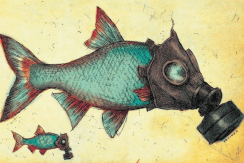
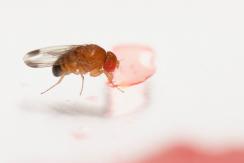
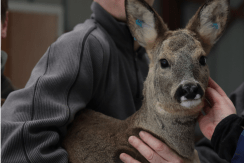
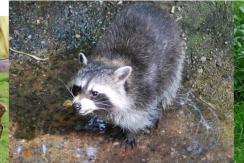
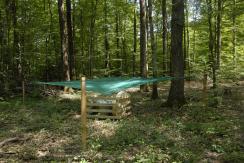
You also, comment on this article